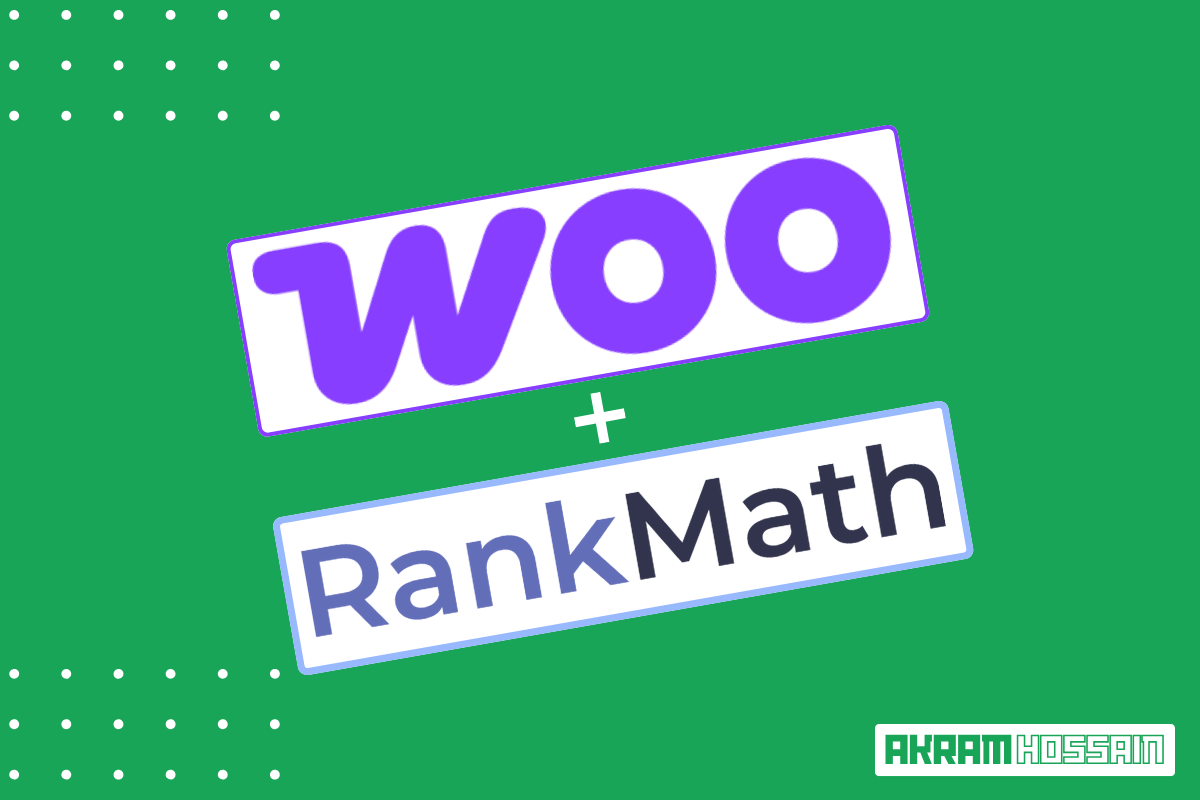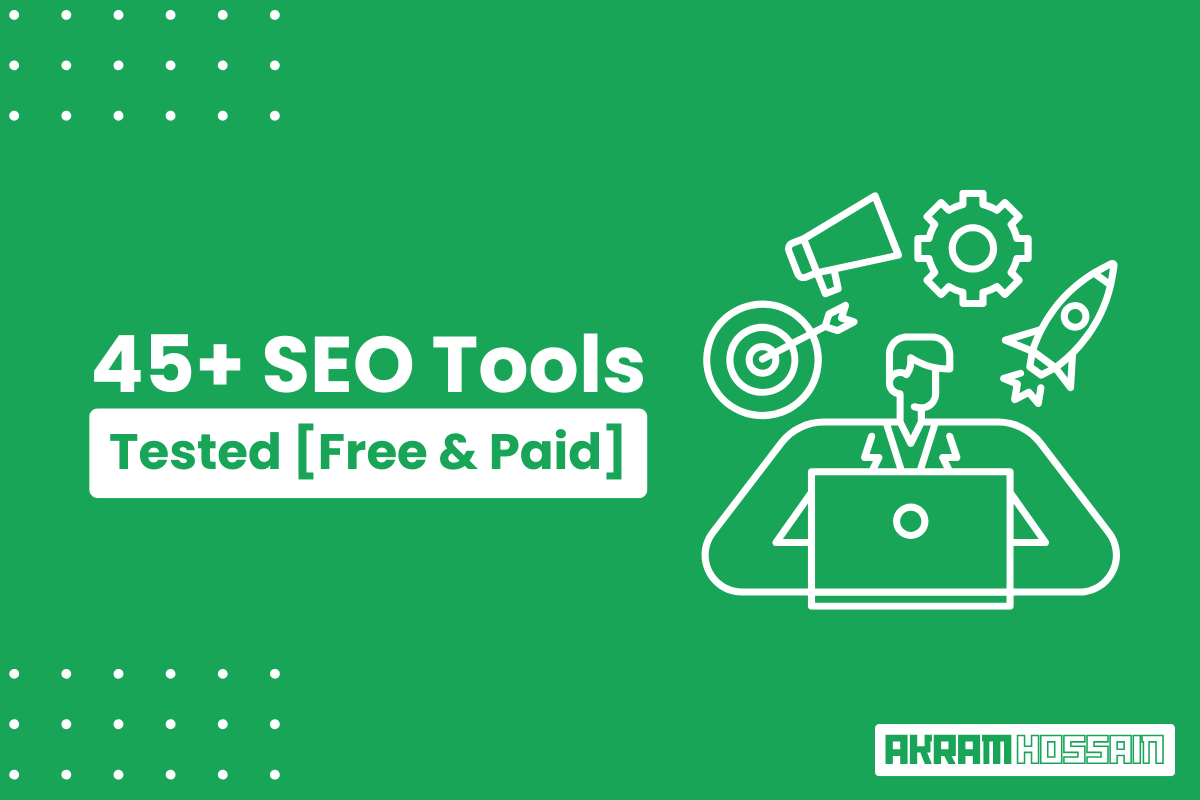How has everything gone digital these days?
Well, that includes how people find and choose local businesses. (You know, folks are using smartphones regularly.)
So, if you run a small business, it’s time to dive into your local customers with Local SEO. Trust me; it’s your ticket to being discovered by those eager-to-buy local customers. Ask me, how?
It’s not magic or rocket science; it’s all about Local SEO Optimization.
In this blog post, I will discuss Local SEO tips that are tailor-made for businesses like yours or clients.
Here, with awesome strategies that’ll help you shine in local searches, it all starts with Google My Business, local citations, and online reviews.
But don’t worry if it sounds a bit techy right now to break it all down for you, step by step.
So, let’s start on this journey to boost your online presence in your neighborhood. 🌟
Understanding Local SEO
So, what’s the deal with Local SEO? Well, it’s like a magic wand that helps your business pop up when people nearby search for stuff online.
Imagine you’re craving pizza and whip out your phone to Google “pizza near me.” Local SEO makes sure your pizza joint shows up right there at the top of the list. (Back of your mind; “Yes, I want this!”)
Here’s the deal: It is a bit like regular SEO (Search Engine Optimization) but with a local twist.
It’s all about telling search engines like Google, “Hey, I’m right here, and I’ve got what these folks are looking for!“
Local SEO is a localized version of your business for a certain place, territory, district, or town. Optimizing the local SEO: every portion of your business should be optimized with that local’s language, environment, gender, their behavior.
Here are some parts you should be optimized;
- Google My Business (GMB)
- Your Business Website
- Local Citations
- Customers Reviews
- Content
- Social Media Presenace
- And Updates
Let’s move forward;
Setting Up Google My Business (GMB) Listing
It is like your online business card that Google provides free of cost. You’ll want to set up and spruce up your Google My Business profile.
Fill in all the details – your name, address, phone number (NAP), photos, and even customer reviews.
It helps Google know you’re legit.
Here are the simple processes to optimize your Google Business listing;
Step 1: Claim Your GMB Listing
Think of GMB as your digital storefront. To begin, go to the Google My Business website and click the “Manage Now” button. If you’re new to GMB, you’ll need to create an account, but if you already have one, just sign in.

Note: Before getting started, you need an account with Google like your existing Gmail, or You can easily create a new one.
Step 2: Business Details
Once you’re in, Google will ask for your business’s basic info. Ensure you fill this out accurately.
Your,
- Business name
- Address
- Phone number

(NAP) should match what’s on your website and any other online listings. Consistency is key here!
You should use the banner name on your storefront banner; Google may also ask for video verification. Otherwise, Google may suspend your business list.
Step 3: Choose Your Business Category
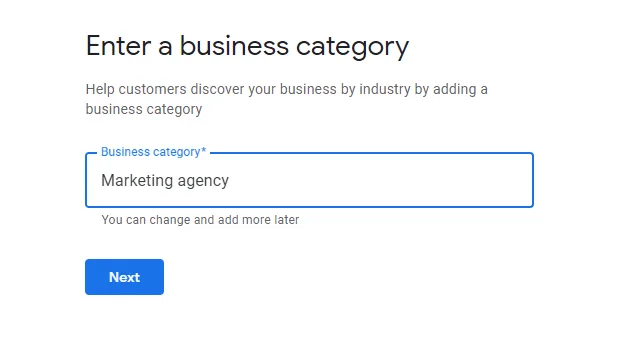
Select a category that best describes what your business does. If you do not find the appropriate category for your business, you may choose the closest relevant one, and further, you may add up to 10 sub-categories.
It helps Google understand what you offer and who your potential customers are. It’s really important, rather than your business name, to provide accurate information as much as possible to Google; it will organically bring you to your list.
Step 4: Add Photos
Now, let’s make your listing visually appealing. Add high-quality photos of your business, both inside and out. Showcase your products, services, and the friendly faces behind the scenes. People love visuals!
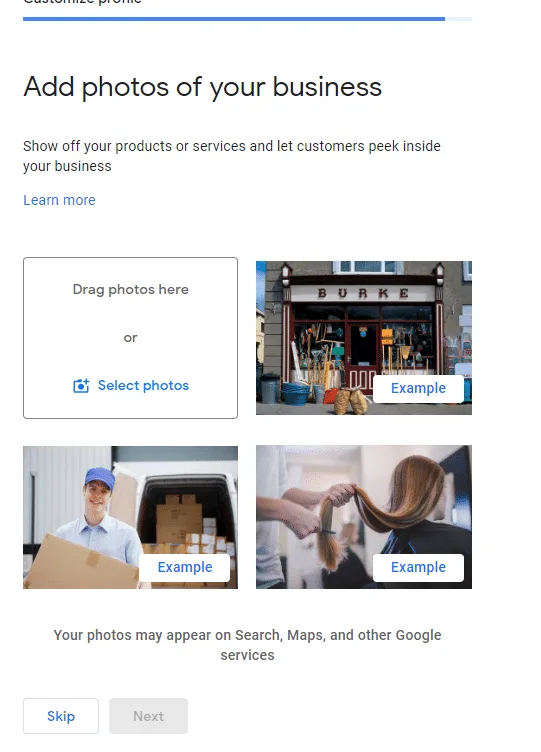
If you are a restaurant owner, you can add your food list picture, cooking, kitchen, and overall interior design of your restaurant, also you can upload your updated menu.
Important: Don’t use stock photos or copies from other channels; it may cause suspension.
Step 5: Verify Your Listing

It’s an obvious and important step of your business listing; Google may ask you to verify in several ways like;
- Email Verification
- Phone Number Verification
- Video Verification
- Mail Latter (Postcard)
- And Others
Depending on your business location and other history, Google can ask any method to verify your listing.
Google will want to ensure you’re the real deal, so they’ll go through a verification process for your legal business.
Once you get it, enter the code in your GMB dashboard to confirm your listing.
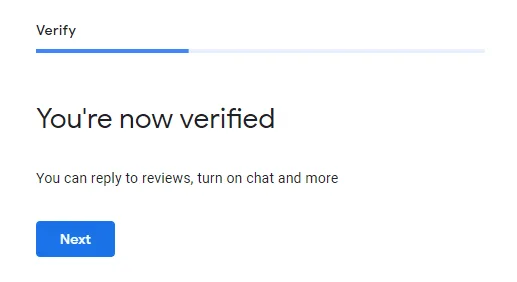
The verification process may take much more time, depending on your verification method and how Google thinks about your business. It can even happen after entering the verification code.
Don’t worry; it will be verified by Google soon.
Step 6: Fill Out Your Profile Completely
Don’t leave any fields blank. Provide as much information as you can, like;
- Business hours
- Website URL
- Business Description (Describe within 700 words)
- Opening Date
- Service Area
- And more
Also, you may add different timetables depending on your restaurant business, like;
- Access
- Breakfast
- Brunch
- Delivery
- Dinner
- Drive-through
- Happy hours
- Hours for the elderly
- Kitchen
- Lunch
- Pickup
- Takeaways
Add options you will get based on your business model.
It’s the chance you need to fill your GMB profile with the maximum information you have. It will help visitors to understand your business before visiting.
Also, Google will think of a complete business listing to give you a higher rank. The more details you share, the better!
Step 7: Reviews and Q&A
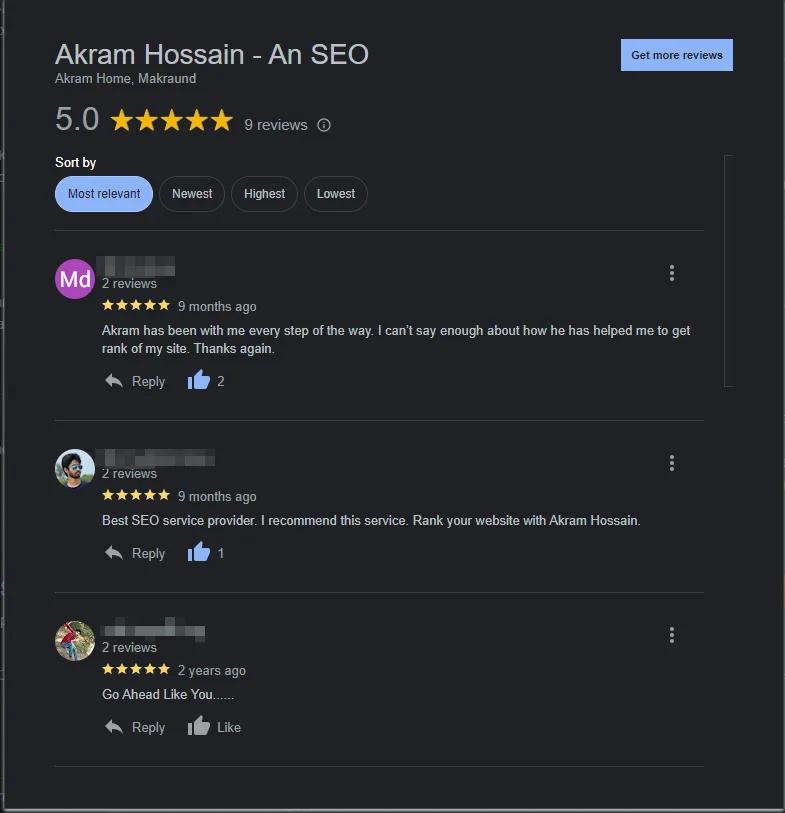
Encourage happy customers to leave reviews on your GMB listing. Collect and respond to these reviews, both good and not-so-good ones, with professionalism. Good reviews will help you rank higher in your competitor lists.
Also, watch the Q&A section, as people may ask questions about your business.
Step 8: Regular Updates
Regular updating signals to Google that you are serious about your business and up to date with the circumstances.
Maybe your business is off for the upcoming holidays, but you didn’t change the opening hours, which may hamper customer visits.
Don’t forget to keep your GMB listing updated. Tell your customers if your hours change or you add new services or products. Google likes to see active and engaged businesses.
Step 9: Use GMB Insights

Google provides data on how people find and interact with your listing. Also, it will share how many people are reaching via call or directly using Google Maps.
Insightful metrics will help you to understand the Take advantage of these insights to understand your customers better and fine-tune your online strategy.
You know, data is the key to making better decisions for the future, and it’s one of your local SEO metrics.
Step 10: Be Patient and Persistent
It might take a little time for your GMB listing to appear in search results. It’s not like that; you verified and got organic visitors from business listings. It’s a natural process, and you must wait for a certain time to appear in search results.
Be patient, and keep refining your profile as you go along.
And there you have it! Your Google My Business listing is up and running. It’s a powerful tool that boosts your local online presence, so make the most of it.
If you need to update or add more info, just revisit your GMB dashboard and update it according to your needs.
Optimizing Your Website for Local SEO
Your business is listed on Google My Business (GMB), and that’s a fantastic start. But if you want to take your local SEO game up a notch, your website needs some TLC, too.
Let’s dive into it!
Spruce Up Your Website’s Basics
First things first, let’s talk about your website’s hygiene. It’s like the foundation of your online presence.
Make your website localized with the people for that particular area; it can be a local language also.
Nail Your Title Tags and Meta Descriptions
Meta title and description are like your website’s mini billboard ads on search results. Make them catchy, but also drop your location and what you do.
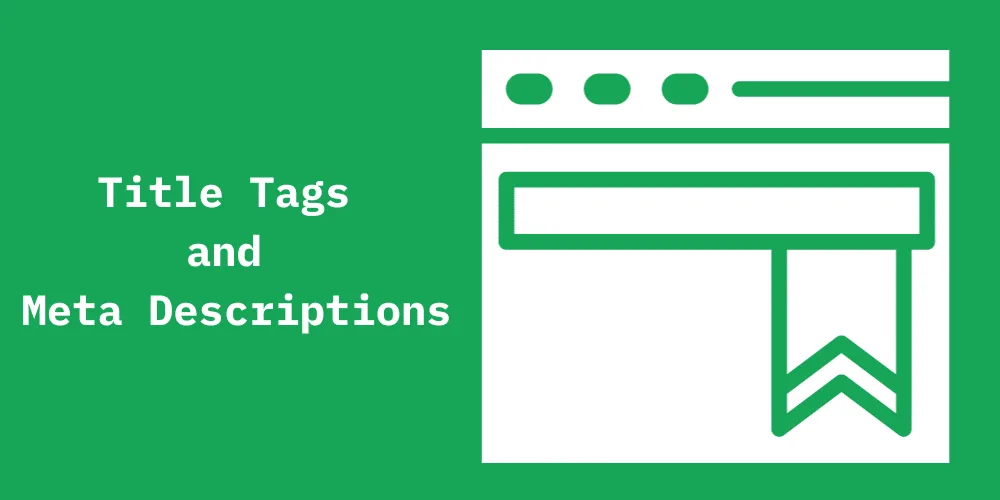
Use your business name with the location you are targeting for visitors; it provides value to them to visit your physical store or call you.
For instance, if you’re a bakery in New York, “Delicious Cakes & Pastries in New York City” could be a winner.
Headers Matter
Use header tags (H1, H2, H3) wisely. They guide both users and search engines through your content.
However, using a localized language tone could be more beneficial to catch the users. It’s like motherhood’s solid smell.
Plus, headers are an excellent place to sneak in local keywords.
NAP Consistency
No, I’m not talking about naptime. NAP stands for Name, Address, and Phone Number In terms of Local SEO.
These details should be consistent everywhere, not just on your contact page. That means your GMB listing, social media profiles, and anywhere else your business info is floating around online.
Like, If you use a phone number in your GMB listing and use a different number on your website’s contact page. It may cause you to suspend your GMB business listing.
Mobile Optimization
Let’s face it, we’re all glued to our smartphones. If your website isn’t mobile-friendly, you’re missing out big time.

A simple thing, you list your business on Google My Business, and it will show on Google Maps (most of the time); then what’s the main point?
Visitors use their phones to navigate your location and can also visit your site using their phones. It’s a really common scenario.
So, you can’t ignore to optimize your website for mobile devices. Google loves mobile-responsive sites, and so do your potential customers.
Let’s Sum It Up
Optimizing your website for local SEO is like giving it a turbo boost. Nail those title tags and meta descriptions, make sure your NAP details are rock-solid, and don’t forget to be mobile-friendly.
These steps will help search engines understand your site’s local relevance, and that’s how you climb up the local search ladder.
Next, we’ll discuss local citations—they’re like online business cards for your website. Stick around!
Local Citations
Now, let’s dive into the nitty-gritty of “Local Citations.” Sounds a bit fancy, right? But don’t worry; it’s not as complicated as it sounds.
Consider citations as your digital business references across the web – the more good references you have, the better your online reputation.
Citations are one kind of digital version of your house’s old directory book. You might see that you or your father may note down the important number in a book in the offline era.
Now, it’s converted into a digital version that is citations of your business that can make your online presence a booster.
What in the World Are Local Citations?
Okay, let’s break it down. Local citations are like your business’s online listings. They typically include your business name, address, phone number (often called NAP), and sometimes more info like your website URL, hours of operation, and a short description.
Note: Remember the NAP consistency so that you might not become a fraud or miss information by you.
Why Are Local Citations Important?
Local citations play a crucial role in local SEO. They help search engines like Google verify the legitimacy of your business and its location.
Think of it this way: when you see a movie with great reviews from multiple sources, you’re more likely to trust it’s a good flick. The same goes for a business; people always like recommendations and reviews about any service or product.
Well, citations are the same – more quality references equal more trust from search engines and potential customers.
Where Should You Get Local Citations?
Here’s the fun part. You can get local citations from various places, like online directories, reviews, social platforms, and even local blogs or news sites.
If you are seeking your business base directory, just search on Google with this search parameter “[Your Niche] + directory in + [Your Place].”
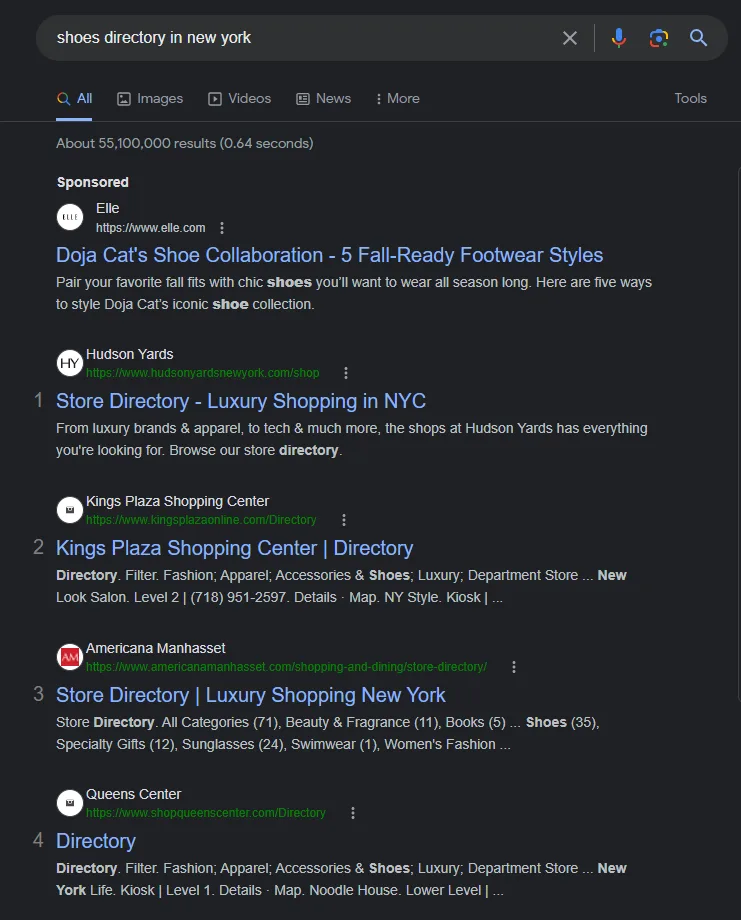
You will get thousands of results to submit, free or paid directory. Initially, you should avoid paid service if you have budget concerns.
Also, some popular citation sources include Google My Business, Yelp, Yellow Pages, and local chambers of commerce websites. But those all are not available in your location. It’s not a concern.
How to Get Started with Citations?
Check Existing Citations
First, search online to see if your business already has citations. Make sure all your info (NAP) is consistent and up-to-date. Consistency is key.
Create New Citations
If you’re starting from scratch, begin with the major platforms like Google My Business. Fill out your profile completely and accurately.
Not only GMB, but you should also create local directory site citations that locally helpful to expand your business.
Niche and Industry Directories
Depending on your business, you might find niche-specific directories or industry-related sites that can boost your online presence.
Find your local and niche-based directory submission websites and fill them out with accurate NAP information.
Monitor and Update
Keep an eye on your citations. If you change your business info (new address, phone number, etc.), update all your citations too.
It’s really important.
Wrapping It Up
So, local citations – they’re like your online business endorsements. The more reliable and consistent they are, the better for your local SEO game. It’s all about building trust with both search engines and potential customers.
Online Reviews and Reputation Management
So, how do you check out those reviews before trying out a new restaurant or buying a product online?
Well, your potential customers do the same when considering doing business with you. Your online reputation matters—a lot!
Here are some tips to rock the review game:
Collect Those Glowing Reviews
Imagine you’ve just had an amazing experience at a local restaurant; the staff was super friendly, the food was divine, and the ambiance was just right.
You’d want to shout it from the rooftops, right? Your customers feel the same way when they love your food: your service or product.
Encourage them to leave positive reviews on platforms like Google, Yelp, or Facebook. Sometimes, all you need to do is ask nicely! Most of the time, if your customers are smart, they willingly leave accurate reviews of what they experienced with you. But technically, you can ask them.
Respond Like a Pro
Whether it’s a rave review or a not-so-happy one, always respond. Thank your happy customers for their kind words and for addressing any concerns from the not-so-happy ones.
In reality, you can not sell or provide 100% satisfactory services, and it’s not realistic.
If you have 1000 customers, it’s normal that 50-60 customers can be unsatisfied with your services or business. As a result, you may get bad reviews from your unsatisfied customers.
Remember, your responses are public, so keep them friendly, professional, and polite. It shows that you care about your customers’ experiences.
PRO TIPS: Provide more than their expectations. Customers always purchase solutions, not your services; keep this in mind.
Consistency Is Key
Ensure your business information (like your name, address, and phone number) is consistent across all platforms.
This is called NAP consistency, and search engines like Google love it. It helps boost your local SEO and ensures your customers can find you easily.
I mentioned above.
Monitor, Monitor, Monitor
Set up Google Alerts or online tools to monitor what people say about your business. Being in the know lets you respond promptly to any issues or negative feedback.
Respond to every feedback and issue with your own responsibility that improves your branding images positively towards the customers.
Build a Positive Online Reputation
Remember, Rome wasn’t built in a day, nor is your online reputation.
Consistently providing excellent service and engaging with your customers can go a long way in building a positive online image.
One wrong approach can ruin your business within a few minutes without boundaries. Be careful before making any decision or response online.
Don’t go with viral or mine-minded ways that also can negatively impact your business. There is no shortcut for success.
Embrace Feedback
Don’t fear criticism. Constructive feedback can help you improve your business. Take it as an opportunity to grow and make necessary changes.
Small businesses may get frustrated to see negative feedback initially, but trust me, it’s normal, and you have to keep calm and provide your best services.
So, there you have it! Managing your online reviews and reputation doesn’t have to be daunting. It’s all about being genuine, responsive, and proactive.
Keep these tips in your back pocket, and you’ll be rocking the online review world in no time!
Content Creation and Localization
Now, let’s dive into some cool stuff – content creation and localization for boosting your local SEO game.
You know, it’s all about making your website more attractive to local folks. I said earlier.
So, what’s the deal with content? Imagine you run a cozy little coffee shop in the heart of your town.
Now, you want people in your neighborhood to find you when they search for “best coffee near me,” right?
Not only that, but also more things come out here to make it specialized for your customers so that they can smell it as if it’s their own.
Let’s break them down;
Create Localized Content
Start by writing blog posts, articles, or product descriptions catering to your local audience. Even in their local language, you don’t need to always make your content in English or Russian if you aren’t here.
Stay their eye distance so that they can relate to you in their own regular activities. Get emotionally connected with them.
Share local stories, events, and news that folks in your area care about. If your coffee shop has a secret recipe for a local favourite, spill the beans (pun intended)!
You don’t need to be professional with them, keep casual and serve the best services; it’s how to connect with locals.
Local Keywords Rule
When you’re creating content, think about what local people might use to find businesses like yours.
Stuff like “Coffee in [Your Town]” or “[Your Town] Cafe Specials” are gold. Sprinkle these keywords naturally into your content, but don’t overdo it – Google’s smart enough to spot keyword stuffing.
Map It Out
If you have multiple locations, create separate landing pages for each. It helps Google understand where you are and boosts your chances of appearing in local searches.
Even keep every page in a different language with different cultural styles. It’s also helpful to grab the core locals.
User-Generated Content
Encourage your customers to generate content for you. Ask them to share photos of their favourite drinks or experiences at your café on social media. User-generated content is like word-of-mouth marketing on steroids.
It’s a simple but helpful strategy to grow your local brand with the help of UGC. It’s one kind of feedback on your services but a slightly updated version.
Stay Fresh
Provide always updated and fresh services or products to your customers; also, don’t forget to keep your online content updated.
It can be events, special promotions, and other things that can interact with your online presence.
Even customers always like updated info.
Be Authentic
People can smell fake a mile away. Be genuine in your content, and let your local personality shine through.
If your reputation goes down for once, it will ruin your whole business within a second without giving any thinking time.
Always be transparent and authentic with your customers, and it’s the key to success for a brand or business in the long run.
Share your journey, passion, and why you love serving the community.
So, there you have it – content creation and localization made easy. Remember, it’s all about connecting with your local audience and giving them informative content that feels like a warm, friendly chat over coffee.
So, grab your keyboard and start writing those love letters to your town!
Social Media and Local SEO
Now it’s time to dive into the fun world of social media and how it can supercharge your local SEO efforts.
So, why is social media important for local SEO? Multiple reasons can improve local visibility with social media.
Nowadays, it’s a tremendous platform to share your business towards local folks on social media; almost everyone is consuming Facebook, Instagram, X and others.
Let’s break down with details;
Social Media Visibility Improvement
Imagine social media platforms like Facebook, Instagram, and X as your digital storefronts. The more active and engaging you are on these platforms, the more likely you are to be seen by your local audience.
When people in your area see your posts, it boosts your online presence and improves your local SEO rankings.
NAP Consistency Matters in Social Media, Too
Remember that NAP (Name, Address, Phone Number) consistency I discussed for your website and Google My Business?
Well, it applies to your social profiles too! Ensure your business info is accurate and consistent across all social media accounts.
It makes it easier for search engines to trust your data and show your business in local search results.
Engage with Your Community
Local SEO isn’t just about what you say; it’s about what others say about you. Engage with your local community on social media.
- Reply to comments
- Answer questions
- Keep a QnA Sessions
Also, encourage customers to share their experiences. Positive interactions can lead to glowing reviews and better local SEO rankings.
Use Local Hashtags and Geotags
Use local hashtags and geotags when you post on social media, especially on platforms like Instagram. It helps your content appear when people search for posts or businesses in your area.
It’s like waving a digital flag that says, “Hey, we’re right here!“
You can use hashtag-generating tools online if you don’t know how to generate hashtags for your niche or keywords.
Key Content For Local SEO
Share content that’s interesting and relevant to your local audience. It could be about community events, local news, or even behind-the-scenes glimpses of your business.
Also, you can make meme marketing if relevant to your business; it’s not a necessary thing that you have to do.
But it can effectively connect with your audience; it can be cringy but bounded with limits.
This not only keeps your followers engaged but can also attract local backlinks, which can boost your SEO.
NAP Consistency in Social Media
Don’t disappear on social media for months and then suddenly post a ton of content. It’s a loss to the social media ranking algorithm, and you may lose social media user interaction. So, Consistency matters.
Try to post regularly, whether it’s once a day or a few times a week. It keeps your audience engaged and your business fresh in their minds.
So, there you have it, my friend. Social media and local SEO go hand in hand. Be visible, be engaging, and be consistent.
Your local audience will thank you, and your business will shine in local search results. 🚀
Let’s move on to the next;
Monitor and Measure Local SEO Success
Monitoring and measuring your success is like checking the scoreboard during a game. Are your efforts paying off?
Here’s how you can do it:
Google Analytics is Your Friend
Just like you’d peek at the stats during halftime, Google Analytics gives you a snapshot of your website’s performance.
You will also get the in-depth metrics of your users, their behavior, time spent, page scrolling, interactions with your site, and more.
Keep an eye on these numbers regularly. And make a data-driven decision that may be helpful for you.
Drive into Google My Business Insights
I said earlier in the GMB section, again, inside your Google My Business dashboard, you’ll find Insights.
It tells you how many people have seen your listing, how they found you (through a direct search or discovery), and even customer actions like website clicks or phone calls.
Use this info to tweak your strategy. It’s really fun, naa?
Rank Tracking Tools
I recommend using Hotjar or Microsoft Clarity to track your website’s full-fledged behaviors, which helps you understand the root user’s data.
These tools provide user heatmaps and session recording so that you can watch users’ interactions with your website visually.
Also, you can use Ahrefs, SEMrush, and similar tools to track your keyword ranking position in SERP.
There are free and paid tools out there, so find one that fits your needs.
Conversion Tracking
This is where you see if all your efforts translate into real business. Track online and offline conversions, like form submissions, phone calls, or in-store visits. It helps you connect the dots between your online presence and actual sales or leads.
Without tracking, you can’t fill in the gap with your ROI; ultimately, it can cause the shutdown of your business.
Remember, It’s a Marathon, Not a Sprint
Just like in sports, SEO takes time. It’s not an overnight game-changer. So, don’t be discouraged if you don’t see immediate results.
Keep monitoring, measuring, and adjusting your strategy as you go along. SEO is all about continuous improvement.
So, there you have it – your playbook for monitoring and measuring your local SEO success. Keep hustling, keep tweaking, and watch your local online presence grow stronger.
It’s all part of the game! 🏆📈
Staying Updated with Local SEO Trends
Now that we’ve covered some killer tips to boost your local SEO game, it’s time to chat about how you can stay in the loop with the ever-changing world of local SEO trends. Trust me; this is a crucial part of the game!
Why Keep Tabs on Local SEO Trends?
You know how trends come and go, right? Well, the same goes for the digital world, especially regarding local SEO.
What worked wonders a year ago might not cut it today. And Google Trends is here to share this data with you.
Where to Get Your Dose of SEO Trendiness?
1. Blogs & Websites:
Make friends with your favorite search engine and look up SEO blogs or websites. There are some fantastic ones out there (no, not to brag, but you’ve already found one!).
2. Social Media:
Don’t underestimate the power of platforms like Facebook, X, Instagram, and LinkedIn. These are the superpowers to get a local audience for your local business.
Follow SEO experts and keep an eye on trending topics and hashtags. One post can boost your sales dramatically.
3. Online Communities:
Join SEO-related forums or Facebook groups where professionals discuss the latest updates and share insights.
If you are working on your own project, it’s fine to learn and implement it, and if you are serving your client’s projects, It’s also a tremendous thing you have done.
4. Google’s Official Updates:
Google often announces algorithm changes, so watch their official blog and social media accounts.
It’s super helpful to optimize the online content that you are targeting to get ranked on Google. (I also love it)
Stay Agile and Adapt
Remember, staying updated isn’t just about knowing what’s hot; it’s about adapting your strategy accordingly.
If you spot a trend that could work for your business, give it a shot! If something isn’t working anymore, pivot and try something new.
Conclusion: You’ve Got This!
Local SEO might seem daunting, but it’s totally doable, especially for small businesses like yours.
1. Google My Business (GMB): Get that listing polished and keep it fresh. It’s like your digital storefront, so make it shine! It’s free and super useful, especially when you are targeting Google users.
2. Website TLC: Well-optimize your website with local keywords and trends, and don’t forget to keep your NAP consistent throughout.
3. Citations and Directories: Get listed in all the right places. It’s like spreading the word about your business across the internet.
4. Reviews and Reputation: Be the local hero by gathering positive reviews and handling any curveballs like a pro.
5. Content and Social: Create content that speaks to your local audience, and don’t be shy on social media – interact with your community!
6. Monitor and Adapt: Monitor your progress and adjust your strategy as needed. Flexibility is key in the digital world.
Now, here’s the deal: local SEO is an ongoing journey. Rome wasn’t built in a day, and neither is a rock-solid online presence.
So, implement these tips one step at a time and stay persistent. It might not happen overnight, but the results are worth it.
And hey, if you ever need a hand or have questions, don’t hesitate to reach out. I’m here to help.
So, go out there, conquer those local search results, and show the world what your small business is made of.
You’ve got this! BYE.


